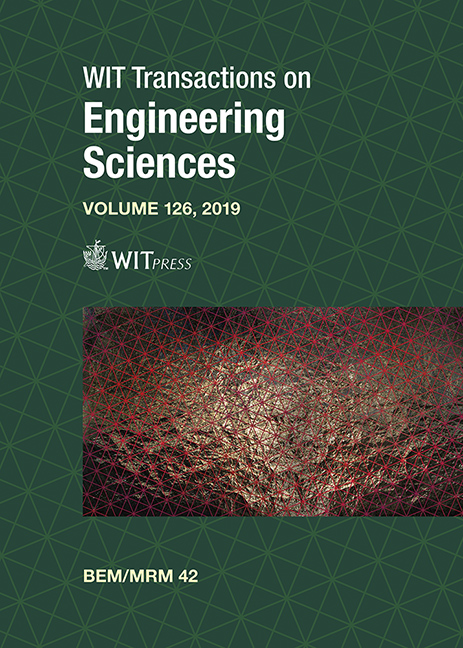BEM–EDM COUPLED ANALYSIS OF MULTI-SCALE PROBLEMS
Price
Free (open access)
Transaction
Volume
126
Pages
10
Page Range
101 - 110
Published
2019
Size
405 kb
Paper DOI
10.2495/BE420091
Copyright
WIT Press
Author(s)
YONG-TONG ZHENG, XIAO-WEI GAO, HAI-FENG PENG
Abstract
In this paper, the element differential method (EDM), a new numerical method proposed recently, is coupled with the boundary element method (BEM), a traditional numerical method, for solving general multi-scale heat conduction problems. The basic algebraic equations in BEM are formulated in terms of temperatures and heat fluxes, which are the same as those in EDM. So, when coupling these two methods, we do not need to transform the variables like the thermal loads into heat fluxes as done with the finite element method (FEM). The key task in the proposed coupled method is to use the temperature consistency condition and the flux equilibrium equation at interface nodes of the two methods to eliminate all BEM nodes except for those on the interfaces. The detailed elimination process is presented in this paper, which can result in the final system of equations without iteration. The coefficient matrix of the final coupled system is sparse, even though a small part is dense. The coupled method inherits the advantage of EDM in flexibility and computational efficiency and the advantage of BEM in the robustness of treating multi-scale problems. A numerical example is given to demonstrate the correctness of this coupled method.
Keywords
coupled analysis, boundary element method, element differential method, multi-scale problems





